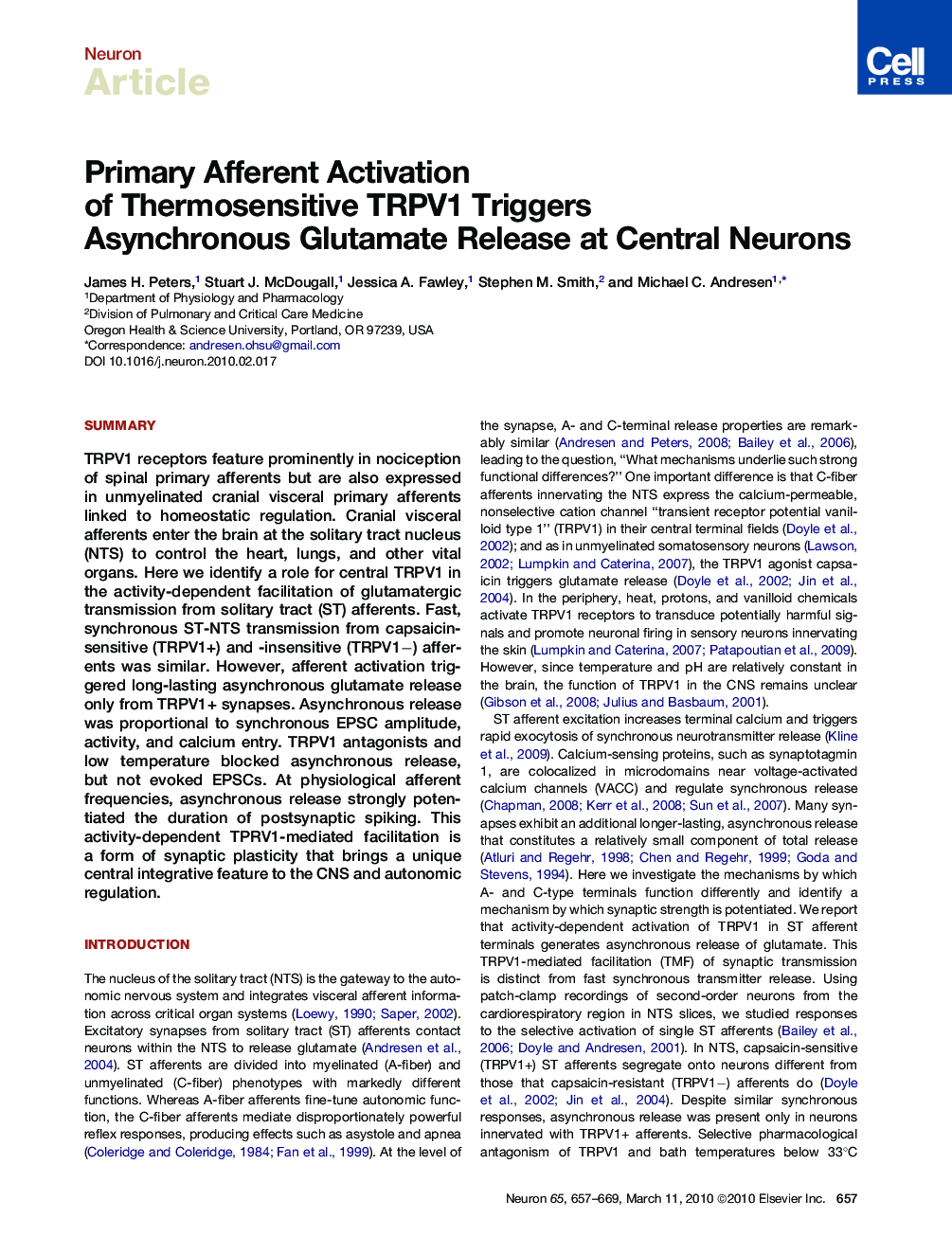| Article ID | Journal | Published Year | Pages | File Type |
|---|---|---|---|---|
| 4322557 | Neuron | 2010 | 13 Pages |
SummaryTRPV1 receptors feature prominently in nociception of spinal primary afferents but are also expressed in unmyelinated cranial visceral primary afferents linked to homeostatic regulation. Cranial visceral afferents enter the brain at the solitary tract nucleus (NTS) to control the heart, lungs, and other vital organs. Here we identify a role for central TRPV1 in the activity-dependent facilitation of glutamatergic transmission from solitary tract (ST) afferents. Fast, synchronous ST-NTS transmission from capsaicin-sensitive (TRPV1+) and -insensitive (TRPV1−) afferents was similar. However, afferent activation triggered long-lasting asynchronous glutamate release only from TRPV1+ synapses. Asynchronous release was proportional to synchronous EPSC amplitude, activity, and calcium entry. TRPV1 antagonists and low temperature blocked asynchronous release, but not evoked EPSCs. At physiological afferent frequencies, asynchronous release strongly potentiated the duration of postsynaptic spiking. This activity-dependent TPRV1-mediated facilitation is a form of synaptic plasticity that brings a unique central integrative feature to the CNS and autonomic regulation.
► Activity in TRPV1+, but not TRPV1−, afferents triggered asynchronous glutamate release ► Synchronous glutamate release properties were indistinguishable across all afferents ► TRPV1 antagonists and low temperature selectively blocked asynchronous release ► TPRV1 mediates tonic signaling and an activity-extending synaptic facilitation
